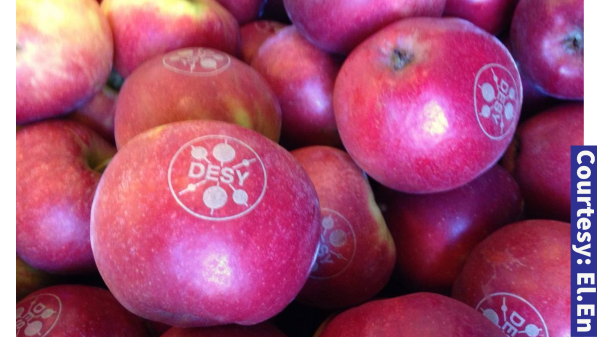I will make a confession: I hate PLU labels.
When I take them off apples, for example, unless I immediately throw them in the trash, they get stuck to the kitchen counter and have to be peeled off a second time.
If you can get one off a ripe peach without defacing the fruit, you have a far defter hand than mine.
Somebody more influential than me dislikes them too: the French government.
According to a USDA report from July, “A French ban on the sales of fruit and vegetables with identifying stickers threatens exports of U.S. sweet potatoes (approx. $20 million in sales annually) and grapefruits ($8 million annually)”.
“The ban on stickers is scheduled to be implemented on January 1, 2022,” the USDA report continues. “Most U.S. grapefruits and some sweet potatoes shipped overseas bear stickers for traceability and marketing purposes.”
Although every business book ever published will tell you that crises and challenges are not threats but opportunities, the language of the USDA report reflects the mentality of a certain segment of American agriculture that never heard this message.

So where’s the opportunity here? One possibility: laser labeling.
This process uses a CO2 laser to engrave the label directly on the item. The website of El.En, one company that offers this technology, says, “Producing a mark directly on the skin of produces [sic] results in reducing the consumption of materials such as paper and plastic and thus in a smaller environmental footprint of the packaging process. A CO2 laser let you . . . engrave a lot of information: traceability codes, logo and brand of the producer, expiration dates. All this pieces of information were usually printed on traditional labels that were sticked on the surface of produces.”
(El.En is based in Florence, Italy, which no doubt explains the website’s rather unidiomatic English.)
El.En contends that the process entails “a smaller energy consumption, the reduction of potentially polluting materials, a higher speed of execution. A perfect tool for all the manufacturers aiming at a greener production process.”
Other advantages include low energy consumption, no use of paper or plastic, cleanliness (glue is not needed), and higher productivity.
“The laser marking process is very fast,” says the El.En site. Although the processing speed depends on the complexity of the information that must be engraved, in most situations the processing time ranges from fraction of seconds, for simple codes to a few seconds, for complex geometries.”
El.En did a trial run with apples and found that the laser could engrave 6 apples per minute, adding, that this speed is “not fixed but depends on the complexity of the results that need to be achieved.”
Another advantage of this kind of labeling is that the popularity of green packaging (or as El.En calls it, “natural packaging”) with consumers will give early adopters a marketing edge.
Is this worth trying? Starting next year, companies wanting to ship sweet potatoes and grapefruit to France may have to find out.



